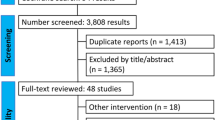Abstract.
Chronic inguinal pain occurs in 20–30% of patients after hernia surgery. A prospective randomized study of 162 patients was undertaken to determine whether absorbable sutures cause less pain than continuous polypropylene fixation of the mesh in the Lichtenstein operation. All patients were operated on under local anesthesia by the same senior surgeon. One-half of the meshes were fixed with continuous 2-0 Dexon II sutures and one-half with continuous 2-0 Prolene sutures. The incidence of pain and recurrence was investigated after a mean follow-up of 2 years. Patient characteristics and operative outcome were similar in the two groups and statistically nonsignificant in both. The rate of significant wound hematomas (n=3), infections (n=1), and recurrences (n=2) were low and not related to the type of sutures. In both study groups 24–26% of the patients felt some pain in follow-up, but over 90% were very satisfied with the operation. The absorbable suture material does not appear to cause less neuropathic pain after Lichtenstein operation than nonabsorbable sutures.
Similar content being viewed by others
Author information
Authors and Affiliations
Additional information
Electronic Publication
Rights and permissions
About this article
Cite this article
Paajanen, H. Do absorbable mesh sutures cause less chronic pain than nonabsorbable sutures after Lichtenstein inguinal herniorraphy?. Hernia 6, 26–28 (2002). https://doi.org/10.1007/s10029-002-0048-2
Received:
Accepted:
Published:
Issue Date:
DOI: https://doi.org/10.1007/s10029-002-0048-2




